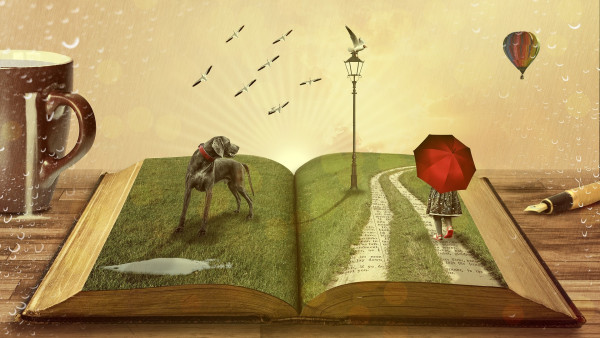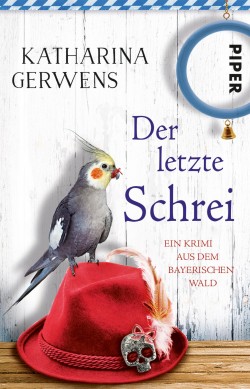Video: A Demo of the Story Development Tool

Guest Post by KT Mehra.
KT Mehra knows a thing or two about writing from her own experience, not only as an author but as a supplier to writers and authors of fine stationary, in particular fountain pens. Not only that, she is digital savvy too.
Back in 1999, KT and her husband Sal started a small web company to create websites for local businesses and provide internet access. They both had a passion for fountain pens, and one day KT, in an excess of enthusiasm, ordered far too many from a pen company. Just for fun, she decided not to return any of them and instead asked her team to design an e-commerce website to sell the extra pens.
To everyone’s surprise and just like that, the website came together quickly and was an instant success.
KT believes that in the modern digitally saturated world, it’s more important than ever to stay true to your thoughts and create something tangible. In that spirit of creation, she feels that something as elemental as putting pen to paper is ever more essential.
Despite offering a digital tool for authors, we couldn’t agree more!

Most of the romance novels you love so much use certain secrets to hook their readers in and keep them engaged.
Learning the secrets to create such compelling romance novels will help you perfect your characters’ love story.
The best way for your readers to relate and root for your relationship is for you to make it realistic and dynamic. To build the foundation of any great love story, you need to have a few things down first. (more…)
Character Building
When you work out what the characters do and why they do it, you are effectively working on your plot.
Find a video here.
The Beemgee character-builder asks you a series of questions about each of your main characters. Answering them will help you find their role and importance in narrative.
Always try to keep your answers as concise as possible. And above all, always remember that knowing the answers to these questions is not enough. You must show your audience what you have answered through scenes. That means there must be plot events that convey what you have answered here to your readers or viewers.
Working on Characters

Click into the CHARACTER area of Beemgee. By the way, stay in the same browser window, whether you’re working on PLOT, CHARACTER or STEP OUTLINE – having one project open in multiple windows may result in some of your input being lost.
In the CHARACTER area you’ll land in COMPARE-view, where you can add a character card for each of the major figures in your story.
Beemgee will help you outline your plot using the principle of noting ideas for scenes or plot events on index cards and arranging them in a timeline. This is a separate process from actually writing the story. Most accomplished authors outline their stories before writing them, because it saves rewrites later.
Find a video here.
In this post we will explain –
The Beemge author tool is divided into three separate areas, PLOT, CHARACTER and STEP OUTLINE. You navigate them easily in the top menu.
Important note: Make sure to stay in the same browser window in whichever area you’re working. Having one project open in multiple windows may result in some of your input being lost.
How To Create An Event Card
Profile settings and the overview of all your projects via the global menu.
The TOUR guides you through the main features and functions. You can turn it on and off any time in your profile settings.
On-site help wherever you are in the tool under | ? |.
How to set and assign recurring motifs to the plot events of your story.
Highlight and Filter Your Scene Details.
Set the structure markers in the NARRATIVE order, see them in both sort orders.
Click one of the links below.
When the project opens, feel free to drag and drop or edit whatever you want – any changes you make will not be saved. It’s the perfect way to explore Beemgee functionality. Try the FILTER function, for instance, or the NARRATIVE-CHRONOLOGY switch. Go to the CHARACTER tool, mark your favourite character and hit DEVELOP in the tool bar. Or read the STEP OUTLINE.
If you don’t have an account yet, you’ll still see all the PREMIUM features, such as STORY QUESTIONS in the STEP OUTLINE section or the detail views of PLOT events or CHARACTER sheets.
SEA BATTLES (Look closely, you might recognise this story!)
Have a look at a list of CLASSICAL CHINESE LITERATURE. Click the NARRATIVE-CHRONOLOGY switch to see the order of appearance and the order of when the stories are set.
Or disentangle the complex chronology of THE STAR WARS SAGA. Click the NARRATIVE-CHRONOLOGY switch to see the difference between the year of production and what happened when in the story.
Finally, read THE BEEMGEE STORY as a Beemgee project. Try opening the DESCRIPTIONs per event at the bottom of the sidebar, or read it as copy text in the STEP OUTLINE section.
by Vincent Teetsov

Residing at the crossroads between songwriting, picture books, and non-fiction with a cultural focus, Vincent Teetsov is a communicator with the ambitious goal of inspiring the world to innovate and live meaningfully through multimedia creations. Since 2013, he has released several music albums and books, relating to topics of history, language, and the passage of creativity through time. This has been particularly impacted by his time living across the United States, Italy, and the UK. Since 2015, he has collaborated with illustrator Laani Heinar in creating the children’s stories, comics, and songs for Pumpkin and Stretch.
You can follow Vincent’s latest activity on Instagram here: www.instagram.com/pumpkinandstretch/ and here: www.instagram.com/vincentteetsov/.
Admittedly, there is less text in a picture book than you will find in a novel. In a picture book, printing specifications typically dictate that there should be 32 pages. This even number allows for the story’s pages to be folded up neatly into a single stack, called the ‘signature’. After printing, the signature is then cut and bound together. Novels have less specific requirements.
With these differences in length, sometimes outsiders to the process of writing will assume that creating a picture book is easier. This is compounded by the fact that most picture books are written for children and use simpler language. Actually, it’s even harder to get this language right than when writing for adults. (more…)

Image: Comfreak, Pixabay
Storytelling is a bit of an overused buzzword. While we are all – by dint of being human – storytellers, how aware are you of the principles of dramaturgy? What exactly constitutes a story, in comparison to, say, a report or an anecdote?
And just to be clear, the following is not a story. It’s an how-to article.
Whatever the medium – film or text, online or offline –, storytelling has something to do with emotionally engaging an audience, that much seems clear. So is a picture of a cute puppy a story? Hardly.
Stories exist in order to create a difference in their audience. Stories always address problems and tend to convey the benefits of co-operative behaviour.
While there simply is no blueprint to how stories work, let’s examine the elements that recur in stories and try to find some patterns.
All stories are about someone. That someone does not have to be a person, it can be an animal (Bambi) or a robot (Wall-e). But a story needs a character. In fact, all stories have more than one character, with virtually no exceptions. This is because the interaction between several characters provides motivation, conflict and action.
Moreover, stories usually have a main character, the figure that the story seems to be principally about – the protagonist. It is not always obvious why one character is the protagonist rather than another. Is she simply the most heroic? Is she the one that develops most? Or does she just have the most scenes?(more…)
This is certainly not the first book for which our author tool was used. But it is the first time that an author explicitly mentions Beemgee in her acknowledgements. Thank you, Katharina, we’re glad you use Beemgee during your story development!
 All The Rage – Der letzte Schrei
All The Rage – Der letzte Schrei
published by the renowned Piper Verlag (Bonnier group)
Susanne Pfeiffer has recently joined the Beemgee team. She interviewed her friend Katharina Gerwens for us.
Beemgee: Congratulations, Katharina! It’s always great when you can hold your own book in your hands … How many novels have you published so far?
Katharina: This is my eleventh regional thriller published by Piper. Soon I’ll make it a dozen ….
Beemgee: I think ALL THE RAGE is a really good thriller title! You like double meanings. – But I want to get at something completely different: You know my foible to start every book by reading the acknowledgements – and here it says, last but not least, you worked on the plot with BEEMGEE! How so?
Katharina: Because for me any support I get is worth mentioning! I have asked so many people in my field about all sorts of things, and in these conversations new aspects have always emerged – the least I can so is say thank you! ALL THE RAGE is, by the way, the first book in which I worked with Beemgee – and it was a great help to me. (more…)
General
Free –
Premium –
CHARACTER
These do not have to be spectacular action events – they can be internal psychological events if your story is about a man who does not leave his room, or spiritual events if you are recounting the story of Buddha sitting beneath the tree. But events there must be if there is to be a story.
In this post we’ll discuss –
Events in a story are effectively bits of knowledge the author wants to impart – in a particular order, the narrative – to the recipient, i.e. the reader or audience. The story is told when all the pertinent knowledge has been presented, when all the bits of information necessary for the story to feel like a coherent unity are conveyed. An author(more…)